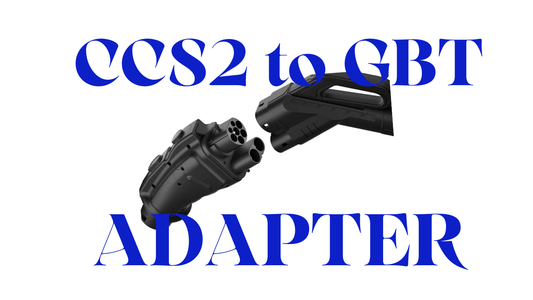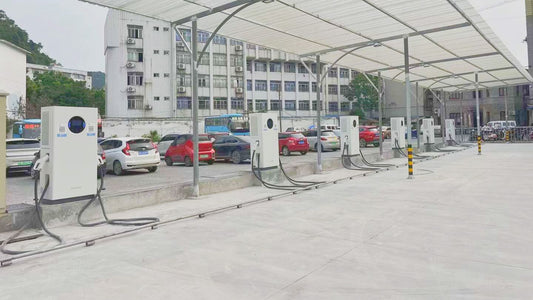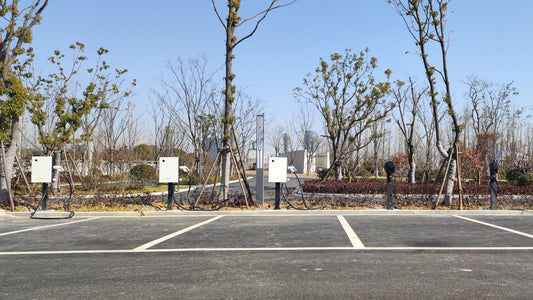It's important to note that the choice between single-phase and three-phase power ultimately depends on the specific application and power requirements. Single-phase power is commonly used for residential and light commercial purposes where lower power demands are present, while three-phase power is more prevalent in industrial and commercial settings with higher power requirements.
Three-phase power systems are often considered superior to single-phase power systems for several reasons:
Power capacity: Three-phase systems can deliver significantly more power compared to single-phase systems. In a three-phase system, power is distributed evenly across three separate conductors, which allows for higher power transmission efficiency. This makes three-phase systems ideal for powering large industrial machinery and commercial buildings with high energy demands.
Efficiency: Three-phase power systems exhibit higher power transmission efficiency compared to single-phase systems. The power is distributed in a way that minimizes the amount of current required for a given power level, resulting in lower resistive losses and improved overall system efficiency.
Balanced loads: Three-phase power enables a balanced load distribution. Loads can be connected evenly across the three phases, which ensures that the system operates with minimal voltage fluctuations. This balance reduces strain on the power supply and improves the stability and reliability of the electrical network.
Motor performance: Three-phase power is particularly advantageous for electric motors. Three-phase motors are commonly used in industrial applications due to their high efficiency, smooth operation, and ability to generate high torque. Single-phase motors, on the other hand, tend to be less efficient and are typically limited to smaller applications.
Cost-effectiveness: While the initial installation costs for three-phase systems may be higher compared to single-phase systems, they often provide long-term cost savings. Three-phase motors tend to have lower maintenance requirements and longer lifespans, and the higher power capacity of three-phase systems can result in reduced energy costs for large-scale operations.
Can I get three-phase power at my house for installing a Wattsaving EV charger?
Yes, it is possible to get three-phase power at home, but it depends on various factors such as your location, electrical infrastructure, and the specific requirements of your home.
In many residential areas, single-phase power is the standard, as it is sufficient for most household needs. However, in certain situations where you have high-power appliances or equipment that require three-phase power, you may be able to request a three-phase connection.
Here are some steps you can take if you are interested in getting three-phase power at your home:
Contact your electricity provider: Get in touch with your local electricity provider or utility company to inquire about the availability of three-phase power in your area and their specific requirements for residential three-phase connections.
Assess your electrical needs: Determine why you need three-phase power and evaluate your electrical requirements. Three-phase power is typically required for heavy machinery, industrial equipment, or large-scale home workshops. If your electrical needs are within the capabilities of single-phase power, it may not be necessary to pursue a three-phase connection.
Consult an electrician: It is advisable to consult a licensed electrician who can assess your electrical system and advise you on the feasibility of a three-phase connection. They can guide you through the process, including the necessary equipment, wiring, and safety considerations.
Consider costs: Keep in mind that getting a three-phase power connection may involve additional costs compared to a standard single-phase connection. These costs can include equipment upgrades, installation charges, and potentially higher ongoing electricity charges.
Obtain necessary permits: Depending on your location, you may need to obtain permits or approvals from local authorities before making changes to your electrical system. Your electrician or utility company can provide guidance on any required permits or inspections.
What kind of EV chargers require a three-phase power setup?
The most common type of three-phase EV charger is known as a "Level 3" or DC fast charger. These chargers directly provide DC (Direct Current) power to the vehicle's battery, bypassing the need for the vehicle's onboard charger to convert AC (Alternating Current) to DC. DC fast chargers require a three-phase power supply to deliver the high-power levels necessary for rapid charging.
You will need a three-phase power setup to install these 2 Wattsaving EV chargers below:
Wattsaving E22 22kW AC EV Charger
Wattsaving U20 20kW DC EV Charger




